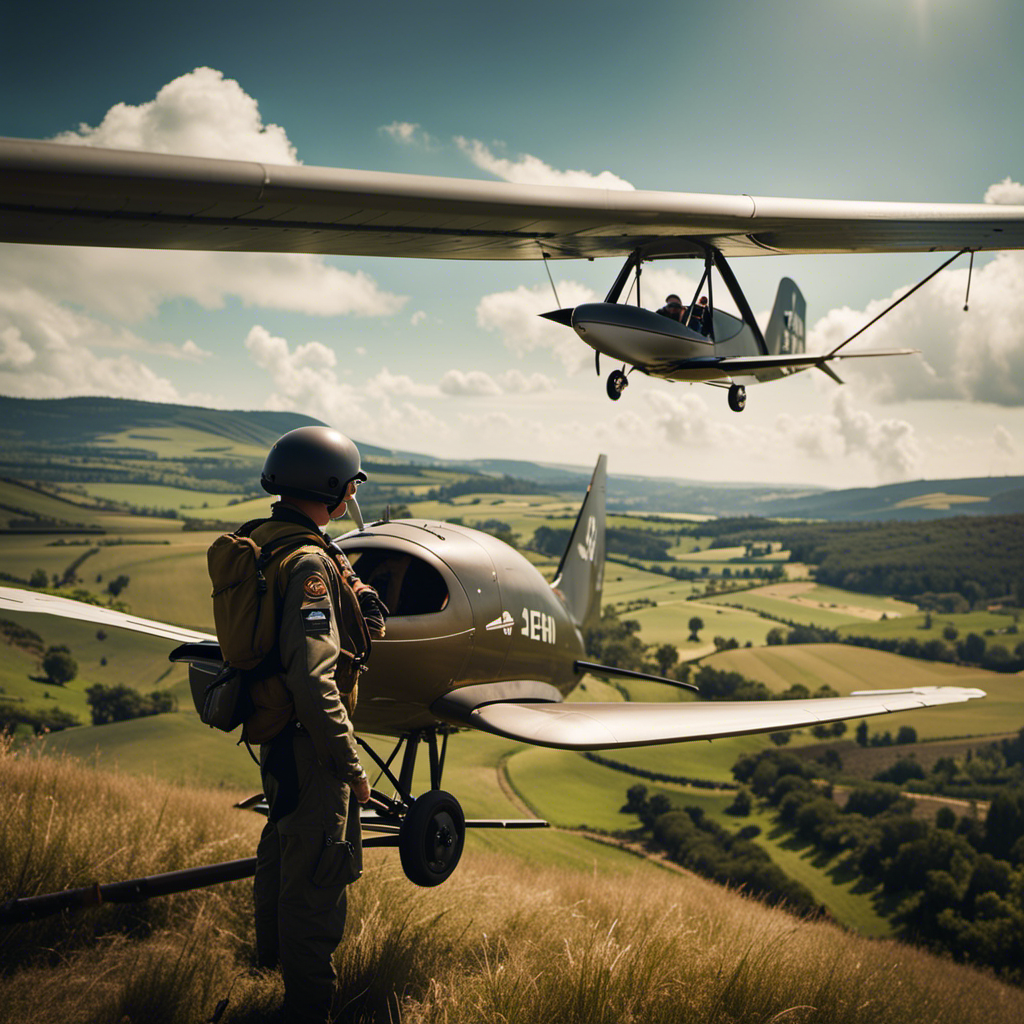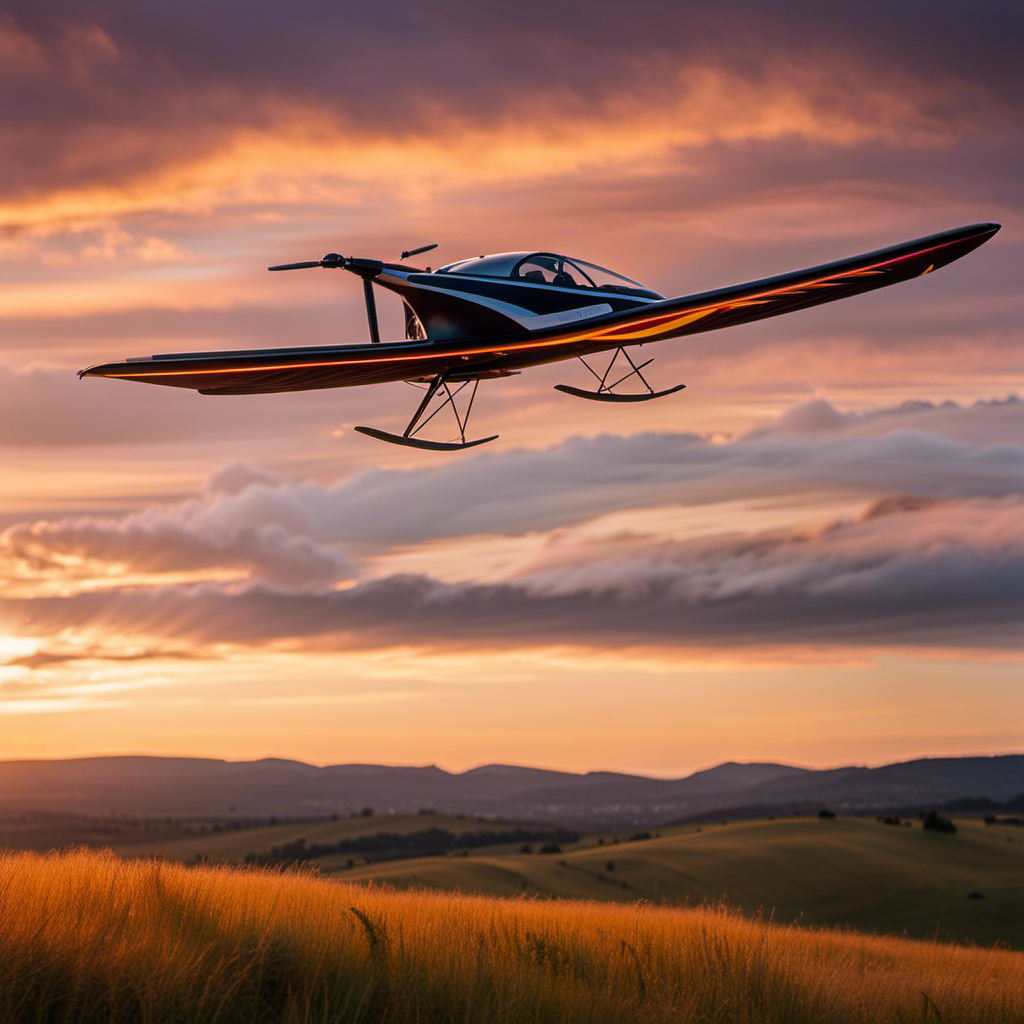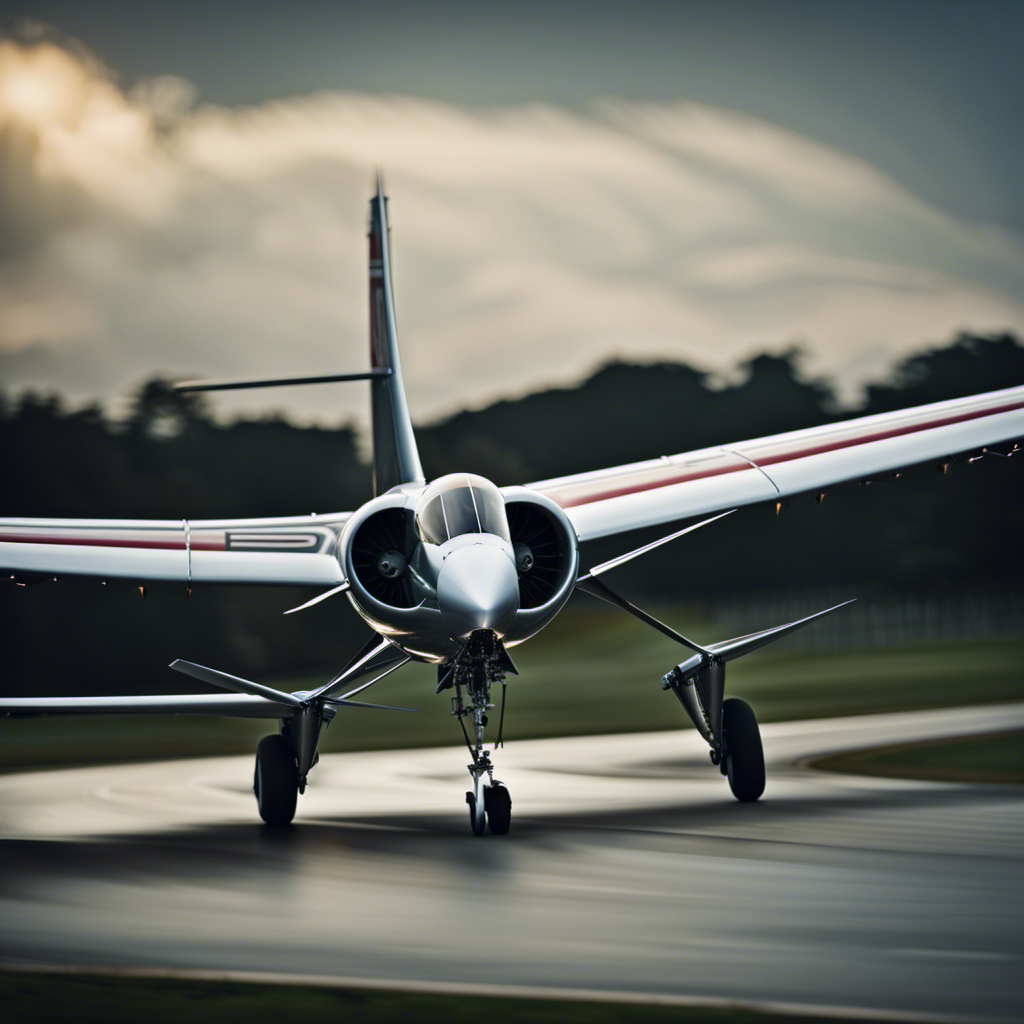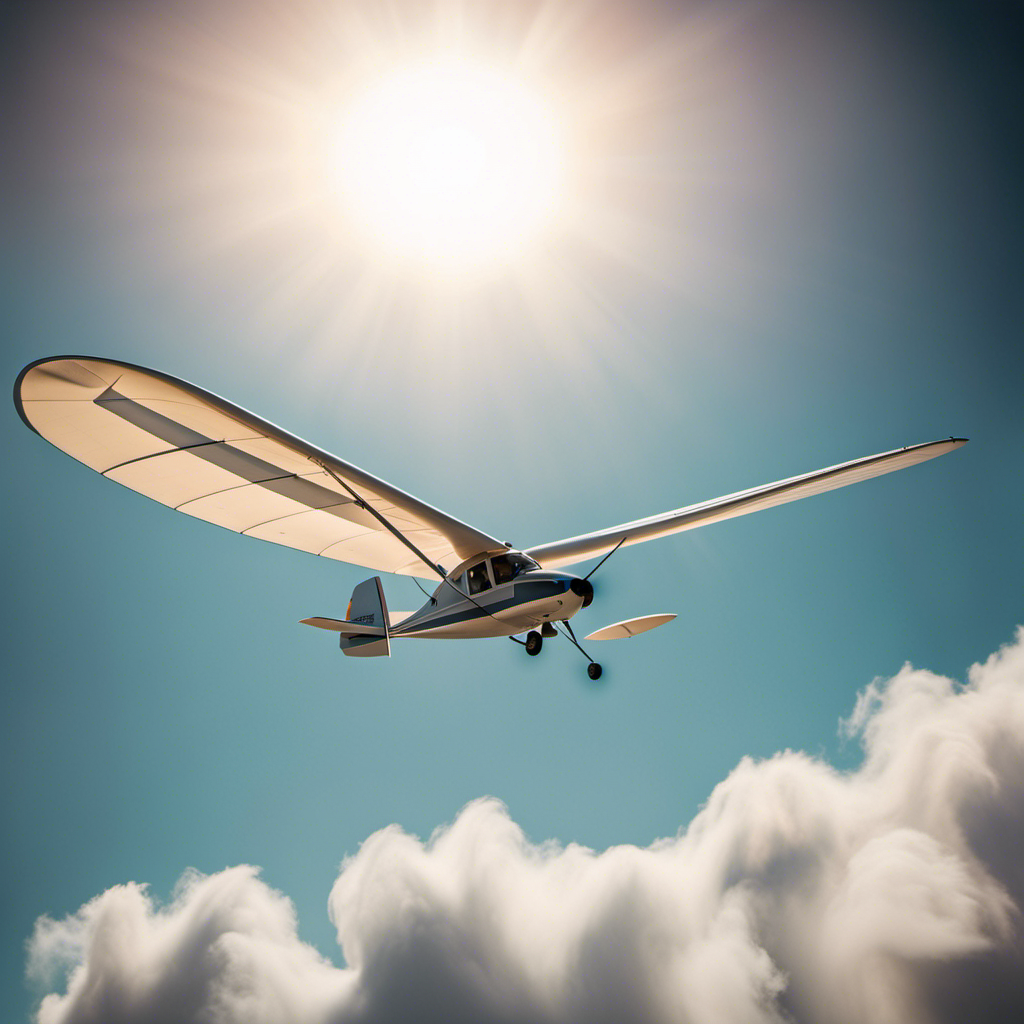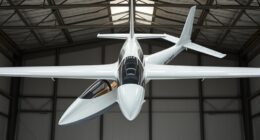Have you ever pictured yourself soaring through the sky, feeling the excitement of flying and the freedom of the vast open skies? Obtaining a glider pilot license can make that dream come true. Discover the exhilaration of piloting gliders and exploring the skies like never before. Don’t miss out on the chance to experience this unique adventure!
In this article, we will explore what is involved in obtaining this license, from understanding the basics of aerodynamics to developing navigation skills and gaining practical flight experience.
So buckle up and prepare for an exciting journey into the world of glider piloting!
Key Takeaways
- Understand the fundamental principles of aerodynamics and how air flows around objects.
- Enroll in a glider pilot training program that meets your criteria and provides proper instruction and guidance.
- Meet the age and health requirements to safely operate a glider and obtain a glider pilot license.
- Complete the necessary flight hours, solo flights, and pass the written and practical exams to obtain a glider pilot license.
Understanding the Basics of Aerodynamics
Understanding the basics of aerodynamics is essential for getting a glider pilot license. As a prospective glider pilot, it is important for you to grasp the fundamental principles that govern the movement and behavior of gliders in the air.
Aerodynamics is the study of how air flows around objects, and it plays a crucial role in the flight of gliders. By understanding concepts such as lift, drag, and weight, you will be able to manipulate the controls of a glider effectively and safely.
Additionally, learning about the different forces acting on a glider and how they interact will enable you to make informed decisions during flight. Once you have a solid understanding of aerodynamics, you can confidently move forward in enrolling in a glider pilot training program.
Enrolling in a Glider Pilot Training Program
When it comes to enrolling in a glider pilot training program, there are a few key points to keep in mind.
Firstly, you’ll want to find a certified flight school that offers this specific type of training. This will ensure that you receive proper instruction and guidance throughout the program.
Secondly, it’s important to meet the age and health requirements set forth by the governing aviation authorities. These requirements ensure that you are physically and mentally fit to undergo the training and safely operate a glider.
Finding a Certified Flight School
Finding a certified flight school can be a challenge, but it’s an essential step in obtaining a glider pilot license. When searching for a flight school, it’s important to consider factors such as reputation, location, and cost. Here is a table that can help you evaluate different flight schools:
| Factors to Consider | Flight School A | Flight School B | Flight School C |
|---|---|---|---|
| Reputation | Excellent | Good | Average |
| Location | Convenient | Far | Close |
| Cost | Affordable | Expensive | Moderate |
This table allows you to compare flight schools based on key factors. Once you have found a flight school that meets your criteria, you can proceed to the next step: meeting the age and health requirements. This ensures that you are physically and mentally fit to pursue a glider pilot license.
Meeting the Age and Health Requirements
Meeting the age and health requirements is crucial in order to ensure that you’re eligible to pursue a glider pilot license.
To begin with, you must be at least 16 years old to fly solo and 14 years old to begin training.
Additionally, you must pass a medical examination to ensure that you are physically fit to operate a glider. This examination will evaluate your overall health, vision, and hearing. It is important to note that certain medical conditions or medications may disqualify you from obtaining a glider pilot license.
Learning the Fundamentals of Glider Operations
Before you can take to the skies in a glider, it is crucial to understand the importance of pre-flight inspections and safety procedures. These checks ensure that the glider is in optimal condition and that all systems are functioning properly.
Additionally, mastering takeoff and landing techniques is vital for a successful and safe flight. Properly executing these maneuvers requires precise control and understanding of aerodynamics.
Pre-flight Inspections and Safety Procedures
Once you’ve completed the pre-flight inspection, make sure to familiarize yourself with the safety procedures. Safety is of utmost importance when it comes to glider operations. To ensure that you are well-prepared, here is a quick overview of the safety procedures that you should be aware of:
| Safety Procedure | Description | Importance |
|---|---|---|
| Seatbelt Check | Ensure that your seatbelt is securely fastened before takeoff. | Prevents injury in case of turbulence or unexpected maneuvers. |
| Emergency Exits | Know the location and operation of emergency exits in the glider. | Allows for quick evacuation in case of an emergency. |
| Emergency Communications | Familiarize yourself with the communication systems in the glider for emergencies. | Enables effective communication with ground personnel in critical situations. |
Mastering Takeoff and Landing Techniques
To ensure a successful takeoff and landing, it’s important to maintain proper speed and control throughout the glider flight. Here are some key techniques to master:
-
Speed Control:
-
Maintain the appropriate airspeed for takeoff and landing, adjusting as necessary for wind conditions.
-
Use the glider’s spoilers or airbrakes to control descent rate during landing.
-
Approach and Landing:
-
Choose a suitable landing area and maintain proper glide path alignment.
-
Gradually reduce speed and altitude as you approach the landing site.
-
Keep the nose of the glider slightly above the horizon to maintain lift and prevent stalling.
-
Use rudder and aileron inputs to maintain directional control during landing.
Developing Navigation Skills
You’ll need to practice using maps and compasses to develop your navigation skills for your glider pilot license. Navigation is a crucial aspect of flying, as it ensures you can safely and efficiently navigate through the skies.
With a map and compass, you’ll learn to determine your position, plan your route, and calculate wind drift. By understanding how to read a map and interpret compass readings, you’ll be able to navigate to different landmarks and waypoints. This skill is essential for cross-country flights, where you’ll need to navigate to specific destinations.
Once you have mastered navigation, you’ll be ready to move on to gaining practical flight experience, where you will apply your skills in real-life scenarios while controlling the glider.
Gaining Practical Flight Experience
Gaining practical flight experience is crucial for developing your skills as a pilot. It allows you to apply the knowledge you have acquired and gain a deeper understanding of flying a glider.
Here are three important aspects of gaining practical flight experience:
-
Solo flights: Once you have completed your initial training, you will be ready to take to the skies on your own. Solo flights help you build confidence and improve your decision-making skills.
-
Cross-country flights: These flights involve navigating through different locations, making use of wind patterns, thermals, and other factors. They enhance your ability to plan and execute long-distance flights.
-
Aerobatic maneuvers: Learning aerobatic maneuvers such as loops, rolls, and spins not only adds excitement to your flights but also improves your overall control and coordination skills.
Gaining practical flight experience is an essential step towards becoming a licensed glider pilot. It prepares you for the challenges you will face during the written and practical exams.
Passing the Written and Practical Exams
Now that you have gained practical flight experience, it is time to focus on passing the written and practical exams to obtain your glider pilot license. These exams are designed to test your knowledge and skills in various areas of glider flying.
To help you understand the content and format of these exams, here is a table outlining the main topics covered:
| Exam Type | Content Covered |
|---|---|
| Written Exam | Air law and regulations |
| Aerodynamics and flight mechanics | |
| Navigation and meteorology | |
| Emergency procedures and safety | |
| Glider performance and limitations | |
| Human factors and decision making | |
| Radio communication and procedures | |
| Practical Exam | Pre-flight inspection and preparation |
| Takeoff, flight maneuvers, and landings | |
| Emergency procedures and decision making | |
| Radio communication and navigation |
By studying and practicing these topics, you will be well-prepared for both the written and practical exams. Once you have successfully completed these exams, you will be one step closer to obtaining your glider pilot license.
Transition into the subsequent section about ‘obtaining a student pilot certificate’: Now that you are familiar with the exams, let’s explore the process of obtaining a student pilot certificate.
Obtaining a Student Pilot Certificate
To obtain a student pilot certificate, you’ll need to complete an application and meet certain requirements.
The application process involves filling out the necessary forms and providing the required documentation, such as proof of identity and medical certification. You’ll also need to pass a background check and pay any applicable fees.
Once your application is approved, you’ll receive your student pilot certificate, which allows you to begin your flight training.
With this certificate, you can start learning the fundamentals of flying a glider and gain hands-on experience under the guidance of a certified flight instructor.
As you progress through your training, you’ll be working towards completing the required flight hours and solo flights, which will be discussed in the next section.
Completing the Required Flight Hours and Solo Flights
When it comes to completing the required flight hours and solo flights for your glider pilot license, there are a few key points to keep in mind.
First, logging flight time and solo flight experience is crucial in order to meet the minimum hour requirements. It is important to accurately record each flight and the time spent in the air to ensure you are meeting the necessary criteria.
Additionally, meeting the minimum flight hour requirements is essential for obtaining your license, so it is important to plan and schedule your flights accordingly to ensure you reach the required number of hours.
Logging Flight Time and Solo Flight Experience
You’ll need to keep track of your flight time and solo flight experience in order to fulfill the requirements for obtaining a glider pilot license. Here are four important things to know about logging your flight time:
-
Flight Log: You should have a dedicated flight logbook to record all your flights. This logbook will serve as proof of your flight experience and will be reviewed by the licensing authority.
-
Flight Hours: Make sure to accurately record the total flight hours for each flight. This includes both solo flights and flights with an instructor.
-
Solo Flight Experience: It is crucial to log your solo flight experience separately from flights with an instructor. Solo flight time is an important requirement for obtaining your glider pilot license.
-
Details and Endorsements: Include relevant details about each flight, such as the date, location, and purpose. Additionally, make sure to get your flight logbook endorsed by your flight instructor after each solo flight.
Meeting the Minimum Flight Hour Requirements
Meeting the minimum flight hour requirements is essential if you want to become a licensed glider pilot. To obtain a glider pilot license, you must accumulate a certain number of flight hours, which varies depending on the country or aviation authority.
Typically, you will need to log a minimum of 40 to 50 flight hours, including both solo and dual flight time. This requirement ensures that you have gained sufficient experience and proficiency in handling a glider. During these flight hours, you will learn important skills such as takeoff and landing techniques, navigation, and emergency procedures.
It is crucial to dedicate enough time to flying and practice regularly to meet these requirements and grow as a glider pilot. Once you have met the minimum flight hour requirements, you can move forward in applying for your glider pilot license, taking the next step towards achieving your aviation goals.
Applying for the Glider Pilot License
When applying for your glider pilot license, it’s important to understand the process. This includes submitting the application, gathering the required documents, and paying the license fee.
To begin, you’ll need to gather and complete all necessary paperwork. This may include medical certificates, logbook records, and proof of training hours.
Once your application is complete, you’ll then need to submit it to the relevant aviation authority. Make sure to include the required documents and pay the designated license fee.
Submitting the Application and Required Documents
To submit your application for a glider pilot license, make sure you’ve gathered all the required documents.
The application process requires certain paperwork to ensure your eligibility and competence as a pilot.
Start by completing the application form, which can usually be downloaded online or obtained from the relevant aviation authority.
Along with the form, you will need to provide proof of your identity, such as a valid passport or driver’s license.
Additionally, you will need to submit your medical certificate to ensure you meet the physical requirements for flying.
Make sure you have all these documents in order before submitting your application.
Once your application is complete, you can proceed to the next step of paying the license fee.
Paying the License Fee
Make sure you’ve gathered all the necessary funds before proceeding to pay the fee for your glider pilot license. Obtaining your license requires a financial commitment, so it’s essential to plan accordingly.
Here are three things to keep in mind when paying the license fee:
-
Check the exact amount: Ensure that you have the correct amount required for the license fee. This information can usually be found on the aviation authority’s website or by contacting them directly.
-
Payment methods: Find out which payment methods are accepted. Some authorities may only accept specific forms of payment, such as credit cards or bank transfers.
-
Deadlines: Be aware of any payment deadlines. Missing the deadline may result in additional fees or delays in processing your license application.
Once you’ve paid the fee, you’ll be one step closer to enjoying the freedom of soaring in the skies.
Enjoying the Freedom of Soaring in the Skies
Flying a glider allows you to experience the exhilaration of soaring through the skies. It’s a unique and thrilling experience that offers a sense of freedom and a connection with nature. Gliding is different from flying powered aircraft, as it relies on the natural forces of the air to stay aloft. As a glider pilot, you have the opportunity to navigate through thermals, ride mountain waves, and explore the vast expanse of the sky. The table below showcases some of the emotions that glider pilots often experience during their flights:
| Emotion | Description |
|---|---|
| Excitement | The feeling of anticipation and thrill as you take off |
| Serenity | The peacefulness and tranquility of being airborne |
| Wonder | The awe-inspiring views and the sense of being part of something big |
| Freedom | The liberation of flying without an engine |
| Achievement | The sense of accomplishment and mastery of a challenging skill |
Frequently Asked Questions
How long does it take to obtain a glider pilot license?
Obtaining a glider pilot license typically takes around 40-60 flight hours, depending on your progress. This includes flight training, ground school, written exams, and a practical flight test. It’s an exciting journey to becoming a glider pilot!
Is there a minimum age requirement to enroll in a glider pilot training program?
Yes, there is a minimum age requirement to enroll in a glider pilot training program. The exact age may vary depending on the country, but generally, you must be at least 14 or 16 years old.
Can I use my glider pilot license to fly other types of aircraft?
Certainly! Unfortunately, a glider pilot license only allows you to fly gliders. However, if you want to fly other types of aircraft, you’ll need to obtain the appropriate licenses for those specific aircraft.
Are there any physical requirements or limitations to becoming a glider pilot?
To become a glider pilot, there are no specific physical requirements or limitations. However, it is important to be in good general health and have the ability to pass a medical examination to ensure safety during flights.
How much does it cost to obtain a glider pilot license?
Obtaining a glider pilot license can cost anywhere from $5,000 to $10,000. This includes flight instruction fees, written exams, medical exams, and aircraft rental. However, costs may vary depending on location and individual factors.
Conclusion
So, you’ve learned all about the basics of aerodynamics and enrolled in a glider pilot training program. You’ve developed your skills in glider operations and spent countless hours navigating the skies, gaining practical flight experience. After obtaining your student pilot certificate and completing all the required flight hours and solo flights, you’re finally ready to apply for your glider pilot license.
The moment of anticipation is here, and soon you’ll be soaring through the skies, enjoying the freedom and exhilaration that comes with it.
